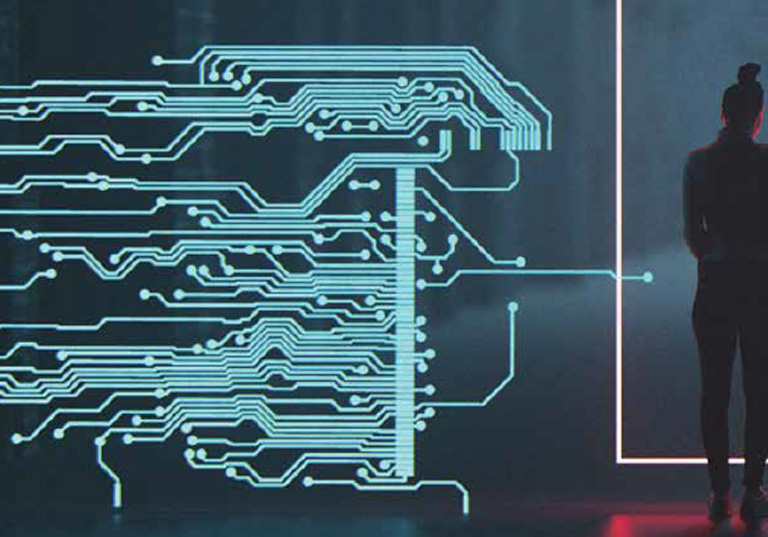We Don’t Sell Doors…The line that loses market leverage for Commercial Integrators every time it’s said.
by Byron Whetstone, American Direct President & CEO
The message above is the message I heard over and over during four days as an exhibitor at a trade-show in early 2015. The International Security Conference (ISC West), with over 10,000 commercial integrators (CI) attending, had dozens of stories about why they don’t sell doors. The most predominant response was, “We just wait until the general contractor and the door installer leave the site and then we install what the owner really needs to operate the access control and security in his building.”
To quote the great poet Bob Dylan, “The times they are a changing.” In the span of fewer than 10 years the supply chains, the go-to-market strategies, and the manufacturing communities realized that the channels have changed, are changing and will continue to change. In this environment to sell and install electronic door locking and access hardware, to establish and select appropriate credentials and to integrate with surveillance at every door opening is a multi-channel requirement and requires multichannel thinking.
Historically, the building owner/ tenant would have a security consultant determine the applications or the feature set for any given building or campus. Today, the architectural community doesn’t have the leverage to stay current on the technology in the marketplace so they rely on specification writers employed by the largest hardware companies. Whether security hardware, cameras, software or locking products, the challenge to gain a functional and dynamic access-control solution depends on gaining consensus from multiple constituencies, most of which have disparate viewpoints on the appropriate technology solution set for the end user.
Internally, we have done an informal analysis, and would suggest that as much as 50% of projects being built today do not have a safety or security preference, specification, or design. This is mostly because owners want to make correct choices and contractors know that multiple sub-contractors cause finger-pointing and unsuitable solutions. A “certificate of occupancy” is required to occupy a building and that means access and egress must be functional.
As a reaction from ISC West 2015, American Direct introduced our “total security solution” thinking. We recommend as an industry (in security and safety) that we enforce the need to embrace a Furious Forward Future Focus (4F).
This fancy bit of alliteration is a simple way to remember that the existing channels have serious lapses, gaps, and shortcomings for the “as-built” community. Further, there is a desperate need to change construction techniques and delivery methods for new construction and renovation for the products and services we provide. For the most secure and safe delivery, for future building occupants, there should be a mandate that requires a single-source access solution, using a centralized sub-contractor or security partner. That partner should be capable of providing every aspect of the security solution, mechanical, electronic and platform implementation. While project materials typically make up about 40% to 50% of a project’s cost, “80% of project costs are driven by the extended supply chain,” explains Stephen Mulva, director of the Construction Industry Institute at the University of Texas at Austin.
By mid-year 2021, many sources have indicated GDP growth of 5+% which means there will be a robust economic expansion that should last at minimum until the mid-term elections in 2022. The return to pre-COVID-19 levels of economic expansion will bode well for the construction industry, but the increase will be accompanied by increasing global security concerns that must meet head-on the growth and change. Therefore, the “construction put in place” will need to adapt to the extensive changes in technology for building management. Future buildings are living technology eco-systems, and there is complexity at each and every door opening.
The leadership of commercial integration businesses and contract hardware businesses are on a collision course and the “door guys” are taking market share consistently by being willing to offer a total suite of products and services. If you are not seeing the “what is happening now,” the door industry is disrupting the integration space by willingly providing offerings and value not related to wall readers and service deployment. The future “go-to-market” channel structures are being defined NOW because door hardware manufacturers are making the most substantial innovations in locking and electronics and they are looking for more paths to the market for their goods.
In response to these perspectives, American Direct has three primary commitments to accelerate organic growth in 2021 and 2022.
1. Turn-key installation and systems implementation: For many, the commercial integration business is based around technology and physical security services. There are people who say that CI picks up where the enterprise contract business leaves off. In the door industry, there is a strong migration towards a “turn-key,” furnish and installation requirement. This has created sub-contracting businesses within distribution businesses and the future will be built around the “lifetime value of the installation” via extended warranty, service agreements, and perhaps “fire door testing.” The up-todate thinking includes the CI business in this service offering. We might argue that the “enterprise contract” work is the platform for taking advantage of the new channel environment.
2. Redefine and Reimagine Revenue Recognition: In 2020, American Direct has aggressively realigned the entire revenue generation team to review project work for technology first and then determine the strategy of the value-add product and service to be provided. Total Security Solutions means every estimator or salesperson must evaluate with the sales leadership how to approach EVERY job. This makes the contract / project work more about relationships than who is the low bidder, improving gross margins. Additionally, the project revenue — mechanical and electronic — will drive an inside selling effort for “recurring monthly revenue” monthly and annually. The table stakes in the new normal require any distribution company that does not have an e-commerce order-taking capability post-pandemic to post a sign suggesting we’re a DINOSAUR.
3. Expansion of the CI business nationwide: The company has American Direct Fulfillment Centers (ADFCs) located strategically in regions across the United States. The challenge especially in 2020 was to use those ADFCs to provide service to the enterprise contract work, by crossdocking, split-shipping, etc. This year the end user, sales order and after-market business was hampered significantly by the COVID-19 virus. Rather than rationalize this infrastructure, we are going to double down on the regional service model and expand the integration business to four additional locations in 2021. With an expected emergence of the total security offering, we think an integration business in excess of $20M in revenue will be a 2022 reality. We’ve outlined our vision for a centralized offering and will make every effort an investment to bring this to reality for all the supply chain participants.
Read the entire article from issue #28 of Total Access Magazine



